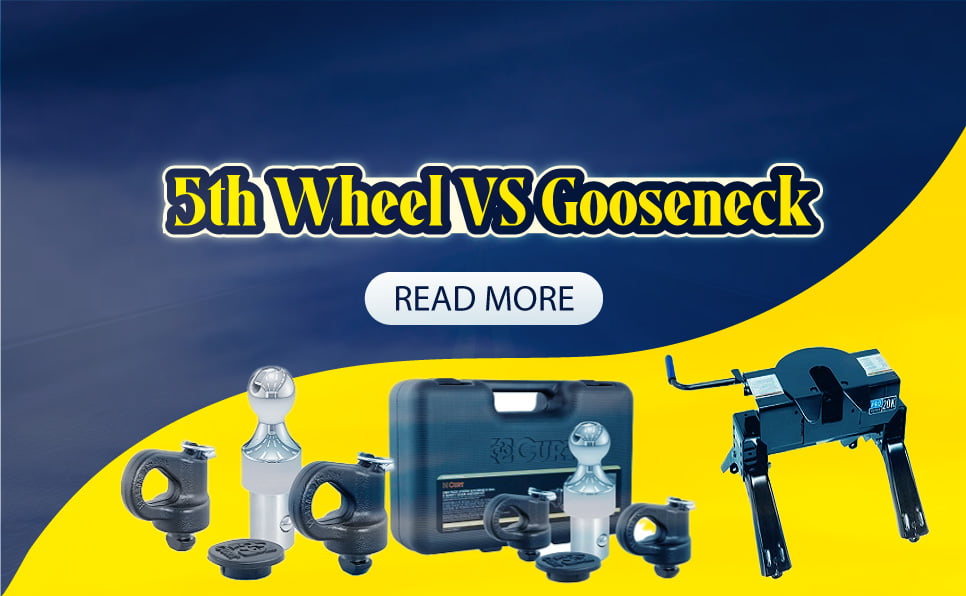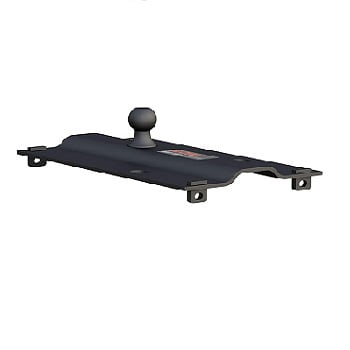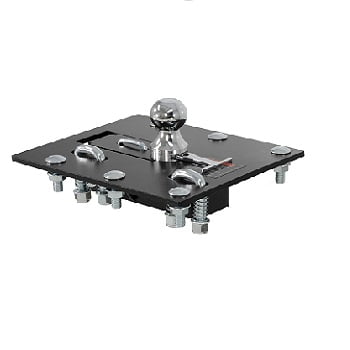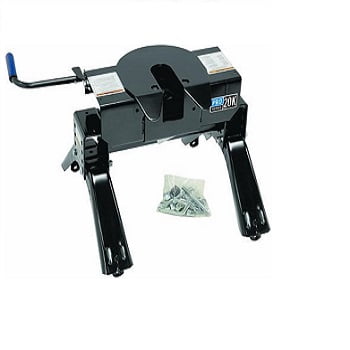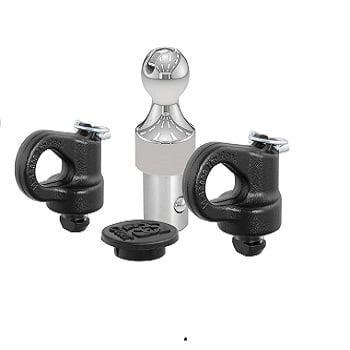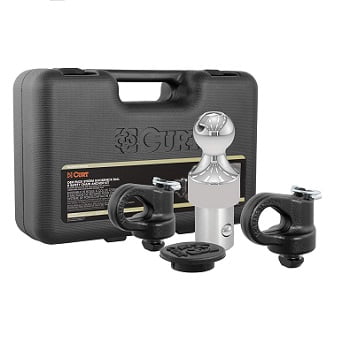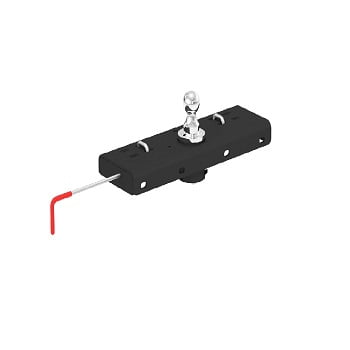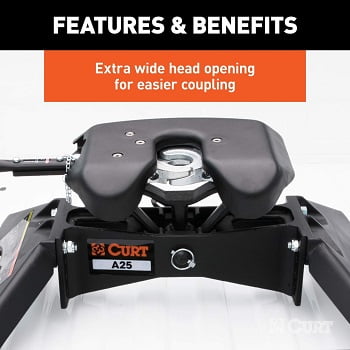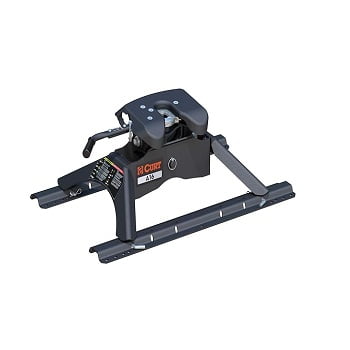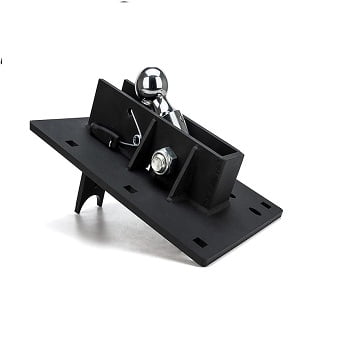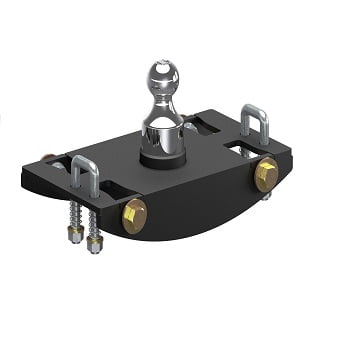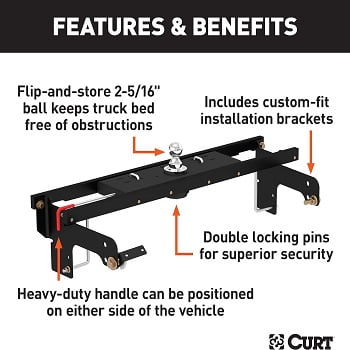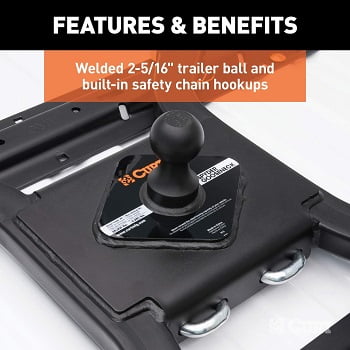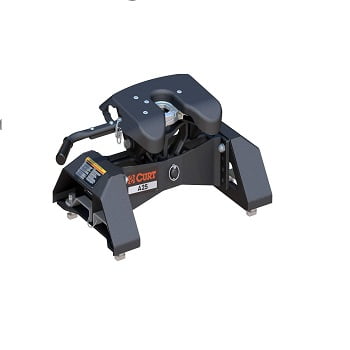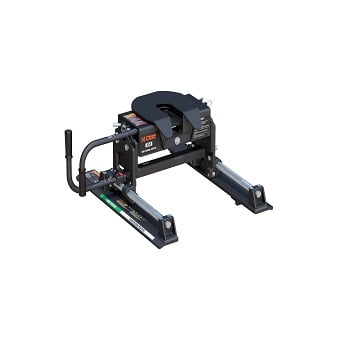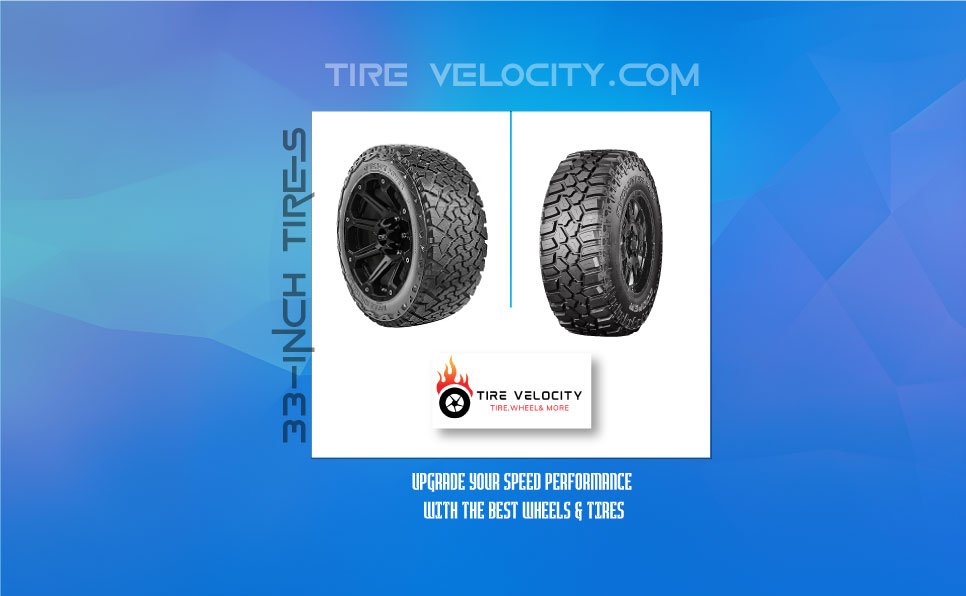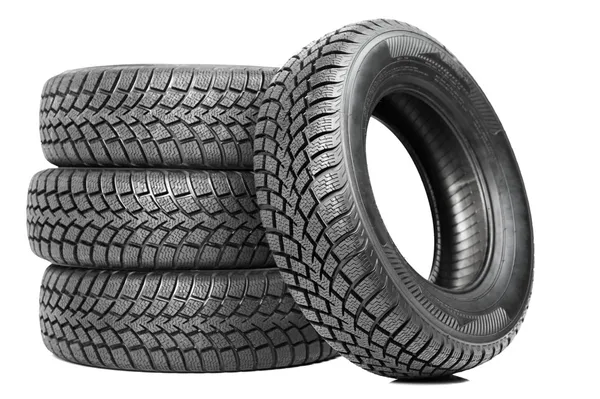Are you in a dilemma about whether to choose a 5th wheel or a gooseneck for your towing needs?
Let’s simplify this for you! Picture this: you’re all set for a road trip, but unsure about the best hitch for your truck bed floor. Enter the world of trailer wiring, ball hitches, and rear axles. Amidst the confusion, there are two contenders vying for your attention: the trusty 5th wheel hitch and the versatile gooseneck hitch.
In this article, we will talk about the pros and cons of each, Thai will help you make an informed decision. From the intricacies of gooseneck trailers to the reliability of 5th wheel hitches, we’ve got you covered. Let’s unlock the mystery behind the 5th wheel vs gooseneck, ensuring your journey on the road is smooth and stress-free.
Understanding 5th Wheel VS Gooseneck Hitches
5th Wheel Hitch:
A heavy duty hitch designed for towing large trailers, the 5th wheel hitch is a popular choice among RV enthusiasts. It features a hitch that connects to a specialized plate mounted in the bed of the truck, creating a secure towing setup. The trailer tongue of the RV fits into a receiver hitch located in the truck bed, providing stability and maneuverability on the road. Installation and removal of a 5th wheel hitch are relatively straightforward, making it convenient for users.
Gooseneck Hitch:
Ideal for hauling heavy loads, the gooseneck hitch offers unparalleled strength and durability. It consists of a gooseneck ball mounted in the bed of the truck, providing a secure attachment point for the trailer. Unlike the 5th wheel hitch, which requires a specialized plate, the gooseneck hitch utilizes a direct connection between the truck and the trailer tongue. This setup creates a strong and stable towing configuration, perfect for towing larger trailers or hauling heavy equipment. Installation and removal of a gooseneck hitch are straightforward, allowing users to quickly adapt their trucks for various towing needs.
How Do They Work?
5th Wheel Hitch Operation:
When towing with a 5th wheel hitch, the trailer tongue fits securely into the hitch’s receiver plate, creating a strong connection between the truck and the trailer. As the truck moves, the weight of the trailer is distributed evenly between the truck’s rear axle and the trailer’s axles, providing stability and control on the road. The hole in the truck bed allows for easy installation and removal of the hitch, making it a convenient option for RV enthusiasts.
Gooseneck Hitch Operation:
With a gooseneck hitch, the trailer tongue attaches directly to the gooseneck ball mounted in the bed of the truck. This direct connection creates a sturdy towing setup, ideal for hauling heavy loads or towing large trailers. The simplicity of the design allows for quick and easy installation and removal of the hitch.ti is not only that, it also ensures users can adapt their trucks for various towing needs with minimal effort.
Exploring the Differences between 5th Wheel and Gooseneck Hitches
When it comes to choosing the right hitch for your towing needs, understanding the differences between 5th wheel and gooseneck hitches is crucial. Let’s break down the distinctions to help you make an informed decision.
Hitch Design:
A significant difference between these hitches lies in their design. A 5th wheel hitch utilizes a large plate mounted in the bed of the truck, while a gooseneck hitch features a ball mounted directly on the truck bed. This variation in design affects the towing setup and the type of trailers each hitch can accommodate.
Towing Capacity:
Another key difference is in their towing capacities. Generally, 5th wheel hitches are favored for towing heavier loads, making them ideal for RVs and trailers with significant weight. On the other hand, gooseneck hitches are preferred for hauling equipment or livestock trailers, providing excellent stability and control.
Maneuverability:
When it comes to maneuverability, 5th wheel hitches offer better handling and tighter turning radiuses compared to gooseneck hitches. This makes them suitable for navigating tight spaces or backing up with precision.
Installation and Removal:
While both hitches are relatively easy to install and remove, there are slight differences in their setup processes. Gooseneck hitches may require drilling a hole in the truck bed for installation, whereas 5th wheel hitches typically involve mounting a plate onto the truck bed rails.
Versatility:
While both hitches are versatile and can accommodate various towing needs, the choice between them ultimately depends on the specific requirements of your towing setup. Consider factors such as the type of trailer you’ll be towing, the weight capacity needed, and the maneuverability required for your towing adventures.
In summary, understanding the differences between 5th wheel and gooseneck hitches is essential for choosing the right hitch for your towing needs. Whether you prioritize towing capacity, maneuverability, or ease of installation, there’s a perfect hitch out there to enhance your towing experience.
Let’s compare the differences between 5th wheel and gooseneck hitches to help you understand which one might be the best fit for your towing needs.
Differences Between 5th Wheel and Gooseneck Hitches:
Aspect | 5th Wheel Hitch | Gooseneck Hitch |
Hitch Design | Utilizes a large plate mounted in the bed of the truck | Features a ball mounted directly on the truck bed |
Towing Capacity | Favored for towing heavier loads, ideal for RVs and trailers | Preferred for hauling equipment or livestock trailers |
Maneuverability | Offers better handling and tighter turning radiuses | Provides stability and control, less maneuverable |
Installation | Typically involves mounting a plate onto the truck bed rails | May require drilling a hole in the truck bed for installation |
Versatility | Suitable for various towing needs | Versatile, suitable for different types of trailers |
Similarities Between 5th Wheel and Gooseneck Hitches:
Aspect | 5th Wheel Hitch | Gooseneck Hitch |
Attachment Point | Both connect to the bed of the truck | Both connect to the bed of the truck |
Stability | Provide stability during towing | Provide stability during towing |
Weight Distribution | Distribute weight between truck and trailer | Distribute weight between truck and trailer |
Ease of Use | Relatively easy to install and remove | Relatively easy to install and remove |
Understanding these differences and similarities can help you make an informed decision when choosing the right hitch for your towing adventures.
5th Wheel Hitch Pros and Cons:
Pros
- Superior Towing Capacity
- Ideal for towing heavier loads
- Enhanced Maneuverability
- Offers better handling and tighter turning radiuses
- Stability
- Provides stability during towing
Cons
- Requires Mounting Plate
- Involves mounting a plate onto the truck bed rails
- Occupies Truck Bed Space
- Heavy duty hitches may occupy space in the truck bed
Gooseneck Hitch Pros and Cons:
Pros
- Versatility
- Accommodates various trailer types
- Compact Design
- Occupies less space in the truck bed
- Stability
- Provides excellent stability during towing
- Ease of Installation
- Relatively easy to install and remove
Cons
- Limited Maneuverability
- May have limited maneuverability in tight spaces
- Less Common Attachment Points
- Attachment point may be less common than 5th wheel hitch
By considering the pros and cons outlined above, you can determine which hitch type best suits your towing needs and preferences.
Exploring the Advantages of Gooseneck and 5th Wheel Hitches
When considering towing options, understanding the advantages of both gooseneck and 5th wheel hitches can help you make the right choice for your needs.
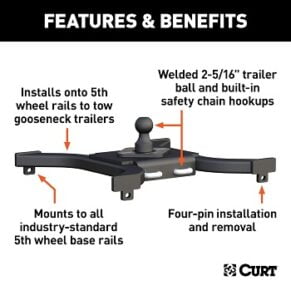
Advantages of a Gooseneck Hitch:
Versatility:
Gooseneck hitches are known for their versatility, as they can accommodate various types of trailers, including livestock trailers and flatbeds.
Compact Design:
The design of a gooseneck hitch allows for a more compact setup in the truck bed, leaving ample space for cargo or other equipment.
Stability:
With the gooseneck ball directly mounted in the bed of the truck, gooseneck hitches provide superior stability during towing, even over rough terrain.
Ease of Installation:
While installation may require drilling a hole in the truck bed, gooseneck hitches are relatively easy to install and remove, making them convenient for users.
Advantages of a 5th Wheel Hitch:
Superior Towing Capacity:
5th wheel hitches are favored for towing heavier loads, such as RVs and trailers, thanks to their robust design and weight distribution capabilities.
Enhanced Maneuverability:
Due to their design, 5th wheel hitches offer better handling and tighter turning radiuses compared to gooseneck hitches, making them ideal for navigating tight spaces.
Stability:
5th wheel hitches provide excellent stability during towing, distributing weight evenly between the truck and trailer for a smoother ride.
Ease of Use:
While installation may require mounting a plate onto the truck bed rails, once installed, 5th wheel hitches are straightforward to use and offer a secure towing setup.
Let’s compare the advantages of gooseneck and 5th wheel hitches in a convenient table format to help you decide which option best suits you’re towing needs.
Advantages of a Gooseneck Hitch:
Aspect | Gooseneck Hitch |
Versatility | Can accommodate various types of trailers |
Compact Design | Occupies less space in the truck bed |
Stability | Provides superior stability during towing |
Ease of Installation | Relatively easy to install and remove |
Advantages of a 5th Wheel Hitch:
Aspect | 5th Wheel Hitch |
Superior Towing Capacity | Ideal for towing heavier loads |
Enhanced Maneuverability | Offers better handling and tighter turning radiuses |
Stability | Provides excellent stability during towing |
Ease of Use | Straightforward to use and offers a secure towing setup |
By considering the advantages outlined above, you can determine which hitch type aligns best with your towing requirements and preferences.
Simplified Installation Guide for Gooseneck and 5th Wheel Hitches
Installing a gooseneck or 5th wheel hitch can seem daunting, but with clear instructions, it’s manageable. Here’s a simplified guide for both types:
Installing a Gooseneck Hitch:
Preparation:
Start by locating the center of the truck bed and marking it. Then, use the provided template to mark where to drill the hole in the truck bed for the gooseneck ball.
Drilling:
Carefully drill the hole in the marked spot. Ensure it’s the right size for the gooseneck ball to fit snugly.
Installation of the Ball:
Place the gooseneck ball into the designated hole and ensure a firm and secure fastening. Make sure it’s flush with the truck bed surface.
Wiring:
Should your gooseneck hitch come equipped with wiring for trailer lights, adhere to the accompanying instructions for linking it to the truck’s electrical setup.
Testing:
After installation, test the gooseneck hitch by attaching a trailer. Ensure everything works correctly and the hitch feels secure.
Installing a 5th Wheel Hitch:
Positioning:
Place the 5th wheel hitch in the truck bed, ensuring it’s centered and aligned with the trailer kingpin.
Mounting:
Secure the 5th wheel hitch to the truck bed using the provided mounting brackets. Tighten them securely.
Wiring:
Similar to the gooseneck hitch, connect any wiring for trailer lights to the truck’s electrical system following the instructions.
Testing:
Once installed, test the 5th wheel hitch by attaching a trailer. Ensure smooth motion and firmly secure the attachment.
By following these steps, you can install both gooseneck and 5th wheel hitches with confidence, ensuring safe towing for your adventures.
Understanding the differences between gooseneck and 5th wheel hitches is crucial for safe towing. Even if you eagling horse trailers or big loads, both types offer unique advantages. Consider factors like towing capacity and ease of installation when making your decision. Remember, safety chain anchors are essential for securing your trailer. So, whether you choose a gooseneck ball or a 5th wheel hitch, ensure proper installation and testing for a smooth and secure towing experience.

